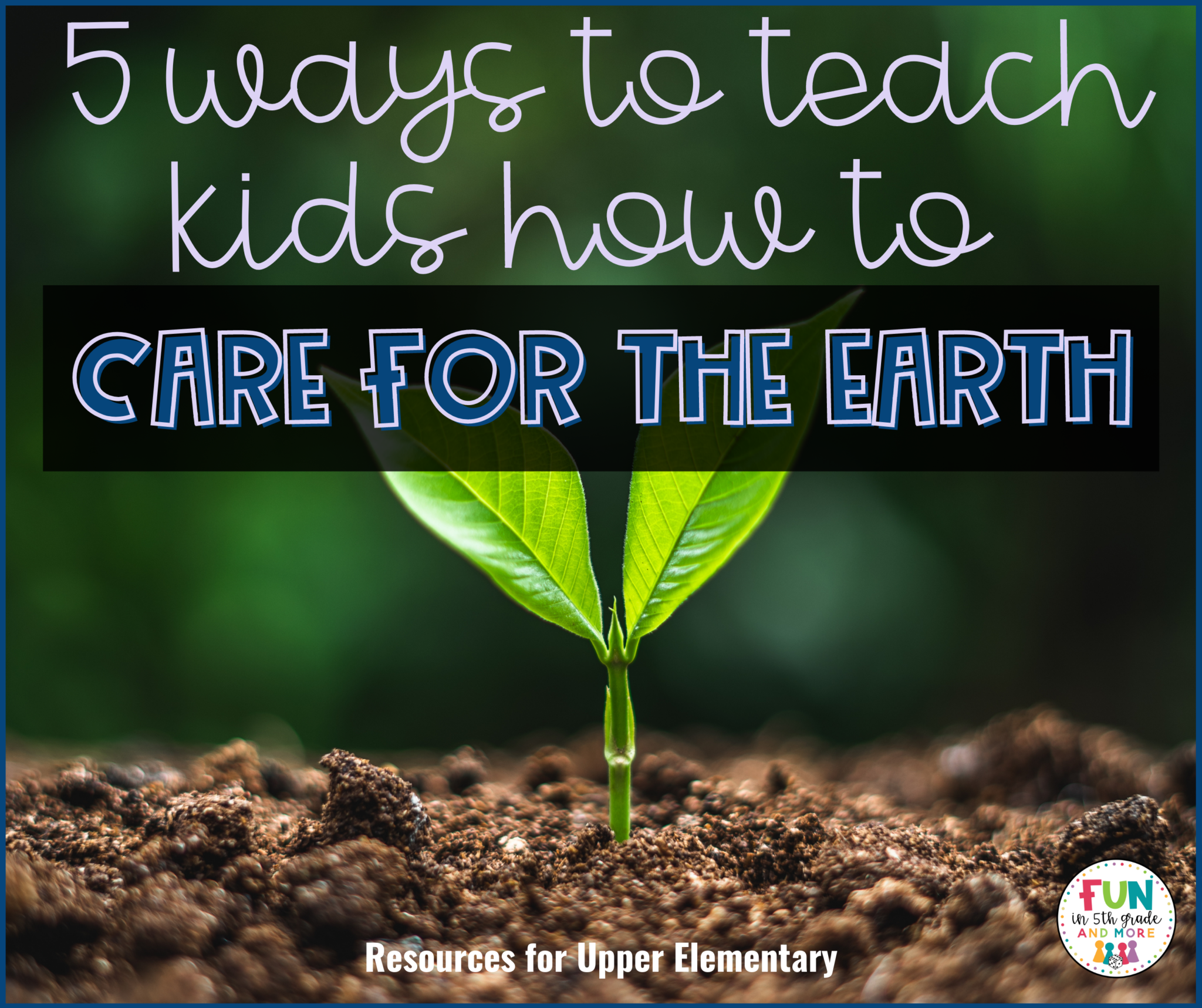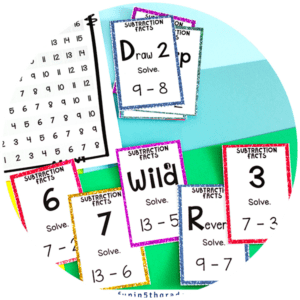Earth day is coming up, and with all the crazy weather patterns we have had this year, taking care of our Earth has never felt more important. Teach kids how to care for the Earth for future generations.
As young kids, our elementary-age students can make an awesome, ongoing impact on their home planet if they are taught to honor and care for the Earth now.
We have developed a list of 5 different ways you may consider celebrating Earth Day in your upper elementary class this year!
5 Ways to Teach Kids How to Care for the Earth
 1| Encourage students to find ways to reduce the use of plastic.
1| Encourage students to find ways to reduce the use of plastic.
The Earth is going to be healthiest in its most natural state, so in the spirit of “leave it as you found it,” we can spend time talking to students about how man-made products affect the earth and its occupants.
In the opening scenes of Disney’s Wall-E, we see just how much damage all that garbage and man-made waste can have on the Earth. Our students may not be able to cut out all waste, but they could start with something simple, such as using reusable straws and cups, and lunch containers.
Cutting down on the number of plastic baggies, plastic straws, and plastic cups they are sending to the landfill is a simple, daily habit our students can form that shows a little love for the Earth.
Challenge students to keep a journal tracking how much waste they are able to prevent from going to the landfill in just a two-week period (then calculate the impact they can have over the course of their life!).
2| Use math to show impact
We all want to incorporate real-world math into our lessons, and what better way to use our daily math skills than by doing some mathematical research?
How many plastic baggies does the school send to the landfill each year? How can we figure it out? Well, let’s get a sample size of students, figure out how many they use, then create an equation to figure out what that data can tell us about the whole school’s impact.
Do you save more water by taking a bath or a shower? Washing dishes or running a dishwasher? What is the best way to wash your hands to conserve water? Brushing your teeth?
All of these questions can produce a mathematical experience for students and get them thinking about how adjusting their own daily habits can help their earth.
3| Encourage students to plant something
Take a day to go out and plant flowers around your school, or encourage students to plant seeds around their homes. Planting trees, plants, and flowers help to absorb CO2 and improve oxygen levels.
Unfortunately, we must not only preserve our planet, but we must also rebuild our planet.
Encourage students to try to plant flowers and plants regularly and maintain them.
4| Do a school audit
After spending some time learning about earth day and how they can make an impact, ask students to spend some time observing your school. Taking notes on how the school may be able to implement new strategies for taking care of the earth.
Maybe it is about doing more digital activities to reduce printing or making recycling bins more available during lunch. Maybe the school can set up compost containers in the cafeteria that can be used in the school’s landscaping instead of other, more harmful materials.
Once you’ve audited your campus, encourage students to brainstorm how they can fix the issues they found, and ask them to write up or create video presentations or proposals to share with administration and school boards to actually implement the changes they want to see!
Many schools have begun adopting ‘community garden’ type areas on their campus. Maybe it’s time for your students to write a proposal to your school board about adopting and starting a community garden at your school where flowers can be used to provide joy and happiness to students and faculty, and any product can be used to provide meals to those in need.
5| Simply teach students about Earth Day and the Earth
In preparation for some of the activities above, you may need to spend some time just learning about Earth Day. Look for informational activities, videos, and reading passages.
Also, instead of making Earth Day a single day, consider creating a full unit surrounding this holiday. Take a few days to learn about Earth Day using resources like our Earth Day Close Reads with Mystery Pictures, and then consider implementing some of the math questions in the examples above and finish the unit by spending a couple of days writing proposals to the school board to implement school-wide changes.
The Earth is important, and taking the time to do Earth Day well in your classroom, could change the way your students impact their Earth for decades to come!

Find more seasonal posts for your upper elementary classroom here.





